Edmund de Waal: ‘I never stray far from white’
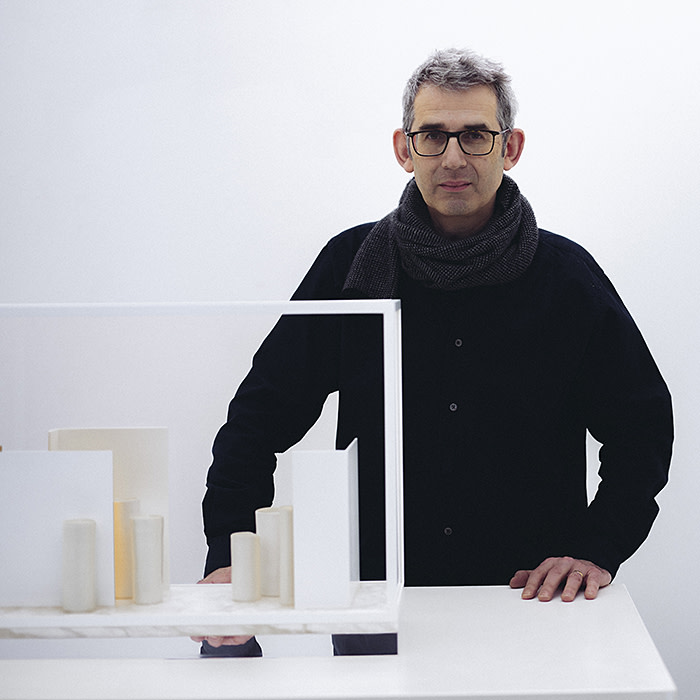
Simply sign up to the Arts myFT Digest -- delivered directly to your inbox.
The south London studio of Edmund de Waal, ceramicist and writer, is warm, calm and very, very white. When he takes me up a small stairway into a pure-white eyrie without any visual distractions, a one-man space that contains just his pottery wheel and a spartan bench, the slightly monastic air intensifies.
Yet the artist himself is the warmest of presences. As we talk about the new work he opens next week, to coincide with the Venice Biennale, entitled psalm — a work, he says, that has been taking shape in his mind for years — it begins to emerge that the importance of whiteness goes far beyond an interior style choice.
De Waal describes the language of the Psalms as the “poetry of exile”. It’s a thought that echoes through the installation piece. It is in two distinct parts, in different sites in Venice, but contains multiple interlinked layers of allusion and reference. Its materials are those most prevalent in his current practice — marble, gold and the pure-white porcelain. And, in this case, books.
The first part occupies the Women’s Gallery of the Canton Scuola synagogue in the Ghetto, with a series of sculptural pieces; the second is in the Ateneo Veneto in the centre of the city. This is a whole, new-made library: a squarish, sharp-edged white box that contains books in translation, all of them by writers who have been in one way or another exiled. The books, de Waal tells me, have been sent by friends, supporters and the wider public, forming a random but vast selection of some 3,000 volumes. With shelves of the artist’s more familiar racks of porcelain vessels to complete the installation, it also creates a space that welcomes visitors who want to sit and read.
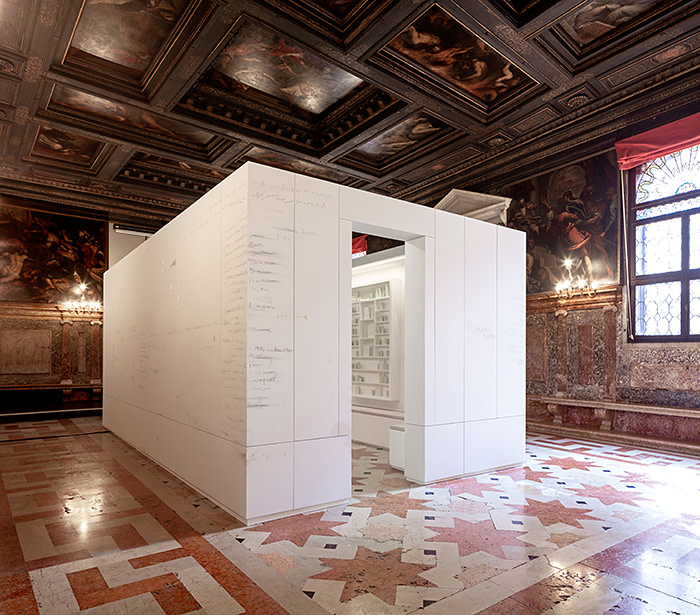
The thematic strands that tie the two parts together are dense with significance — ideas of exile and belonging, Jewish heritage and diaspora, travel and trade, multilingual literature and its role in cultural richness, cultural cohesion, and much more. The external walls of the library evoke these layers of meaning in a tangible way: first coated in gold leaf, they’re then covered with a porcelain slip into which, while it is still wet, de Waal has written the names of lost libraries of the world, so that the letters gleam through, a delicate, mysterious palimpsest. He shows me a ravishing tabletop created with the same technique: there’s something beguiling about the contrast between the formality of the porcelain and gold, and his cheerfully sprawling handwriting.
The walls of his library are, de Waal tells me, the largest ever made of porcelain. And the material has a special place in his heart, and his practice. His “obsession” with porcelain — he uses the word himself — dates from the beginning of his work in ceramics but has more recently taken on wider proportions, involving a journey that resonates with the associations of Venice as a mercantile city sitting at the nexus of east and west.
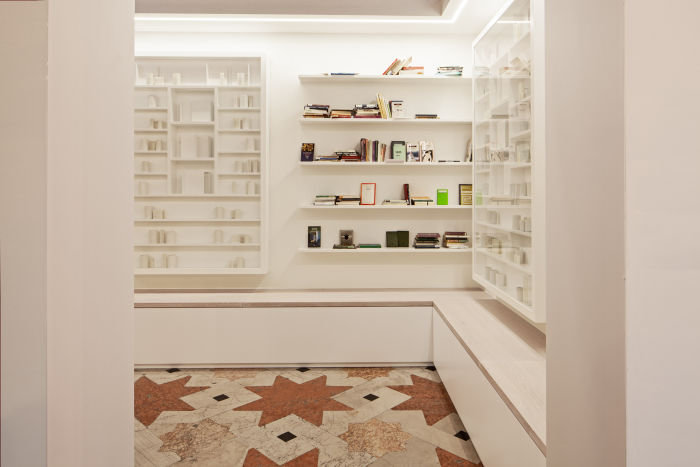
As a writer, de Waal found huge fame with his book The Hare with Amber Eyes, an exploration of his family — and their collection of exquisite Japanese netsuke, including the hare of the title — which involved journeys around and through central Europe, and as far as Japan. His next book, although it met with less celebrity, involved even more travel, intellectual and artistic as well as practical. My mention of The White Road brings one of the artist’s sudden, huge smiles: “Oh, no one reads that one,” he laughs.
Oh, but they do. The 2015 account of his “pilgrimage” to the three most significant sites for porcelain — Jingdezhen in China, “the mountain where the white earth comes from”, Dresden in Germany and Cornwall in south-west England, where the two minerals used in making porcelain (both of them white) also occur — is as intensely felt and delicately crafted as all his work. And his quest to discover the history and secrets of the material is as multi-layered and vivid as his white and gold scripts.
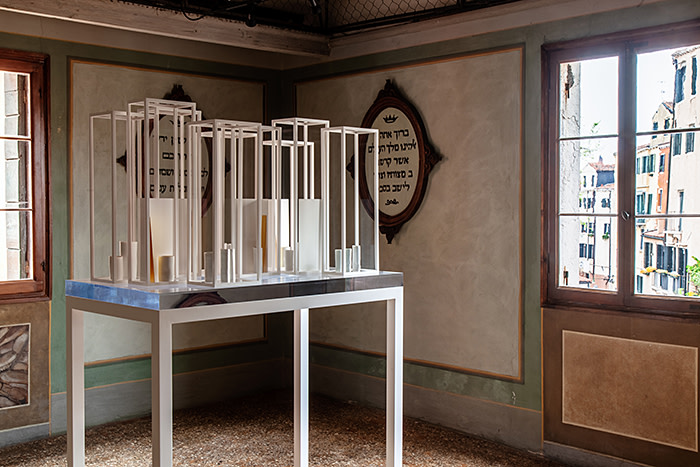
More recently still, his fascination with materials that originally made their way to the west along the ancient silk routes has extended to paper. In the making of a superb artist’s book for Ivorypress in Madrid, he used paper from China, England and elsewhere, and delighted himself by hiding in the bindings scraps of medieval manuscripts and other nods to the history of the substance. His white-on-white palimpsest creation continues: the book’s text, a poem by Paul Celan, is partly obscured in places by a brushed-on slip of porcelain, over which de Waal himself writes. The Ivorypress show, breath, includes new work and a 100-book library.
Also in the studio, de Waal shows me work he is making for his next show, at the Frick in New York. Here, in small installation pieces almost like architect’s models for some minimalist fantasy palace, thinnest marble is made to resonate with the gleam of fine gilded porcelain slabs. Placed among the ornate riches of the Frick, the effects should be striking — but, as he says, “I never stray far from white.”
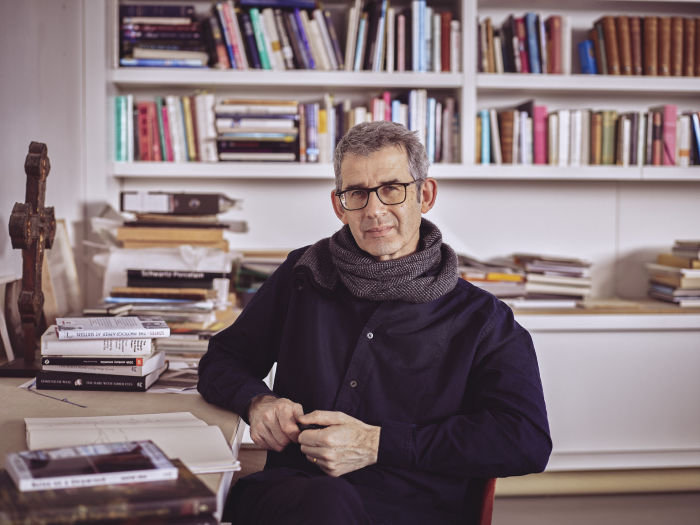
Jewish Museum and Ateneo Veneto, May 8-September 29, psalmvenice.org; The Frick Collection, May 30-November 17, frick.org
Follow @FTLifeArts on Twitter to find out about our latest stories first. Subscribe to FT Life on YouTube for the latest FT Weekend videos
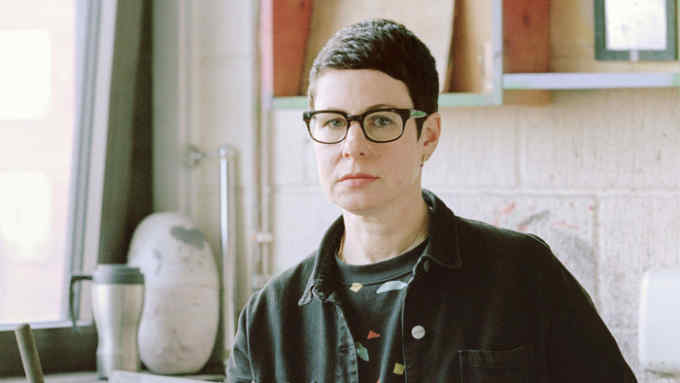
Comments